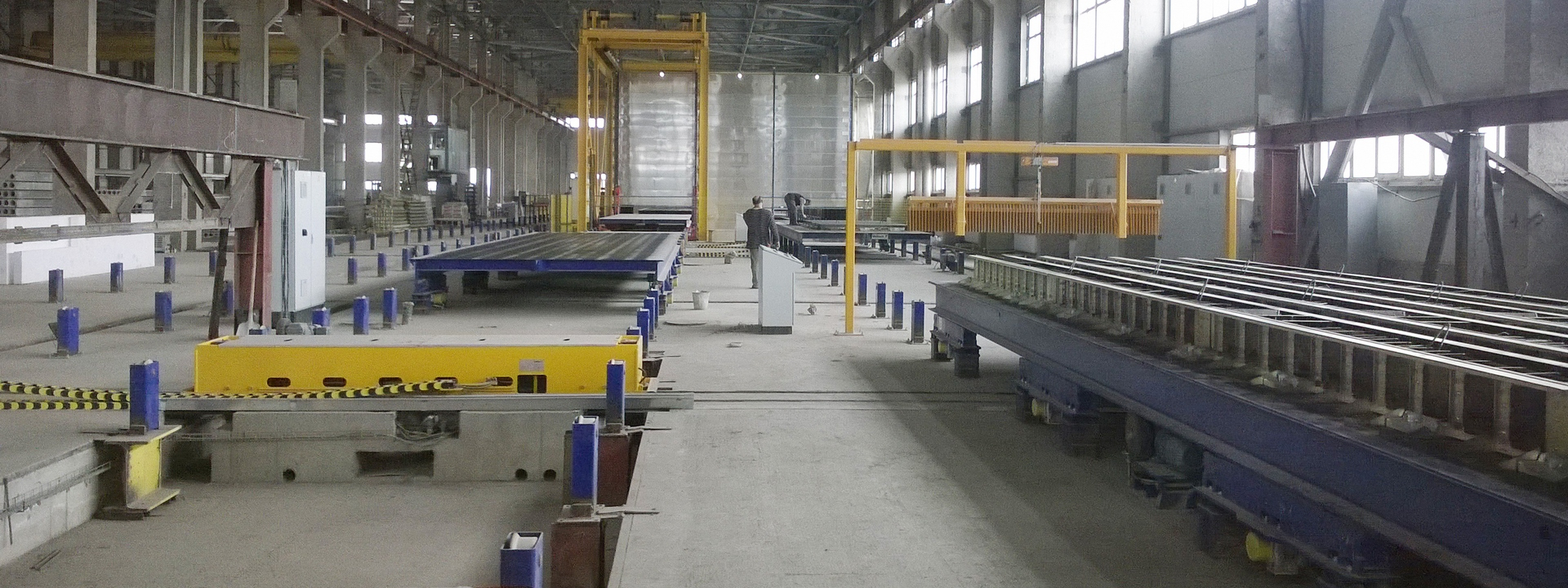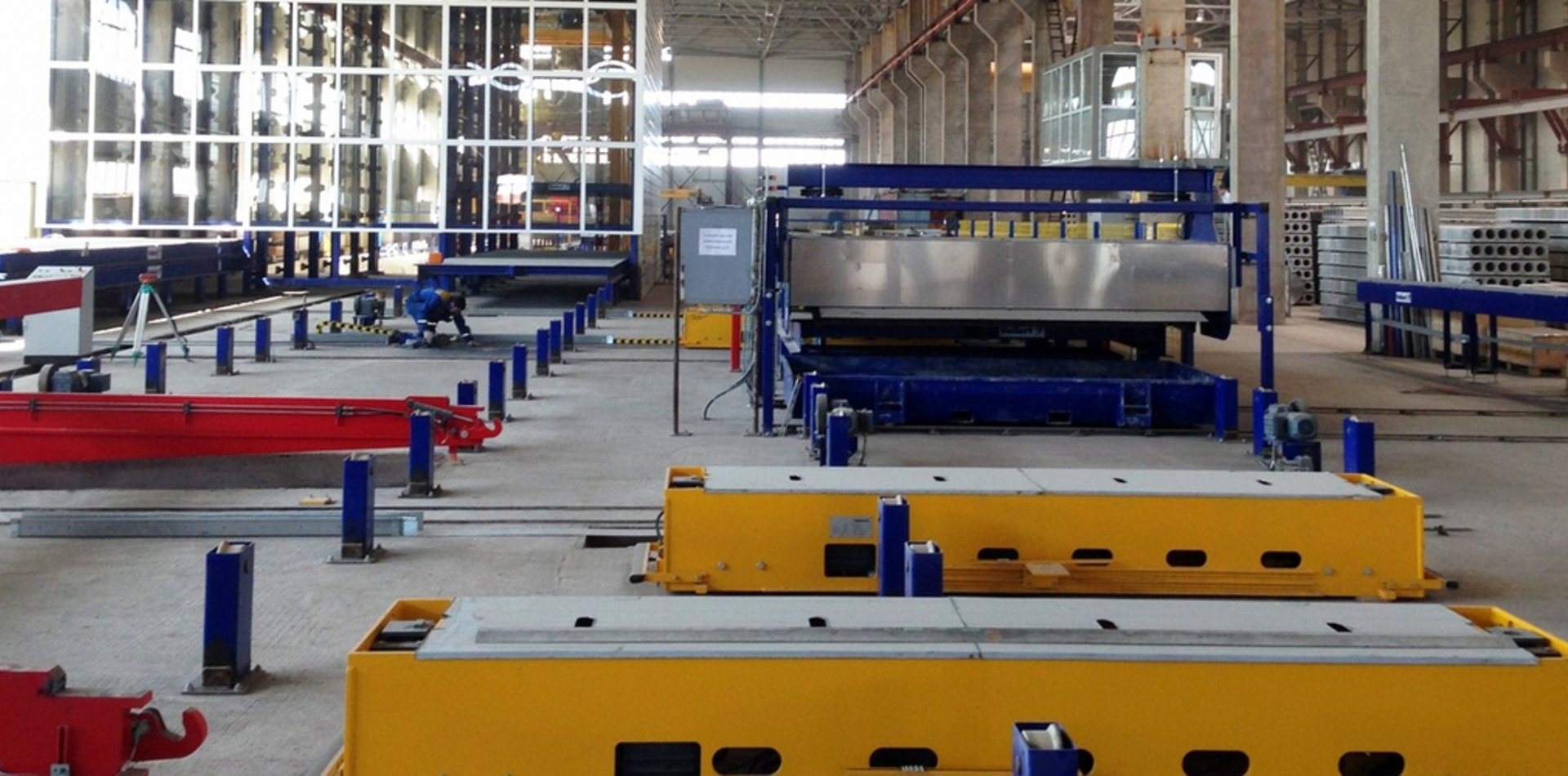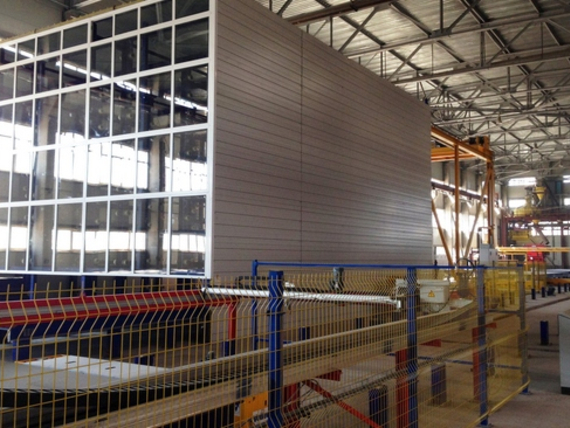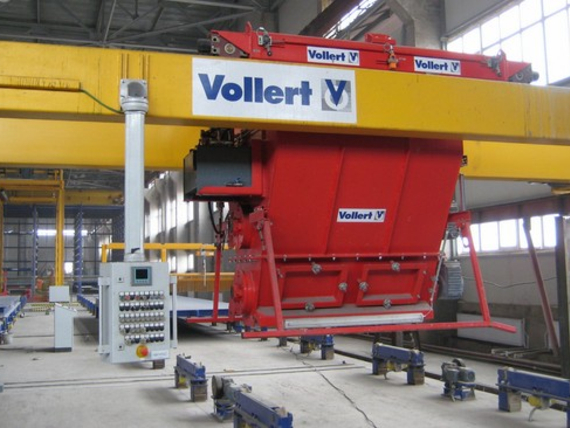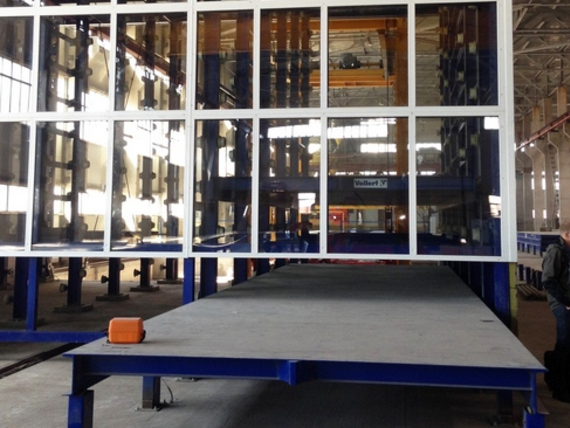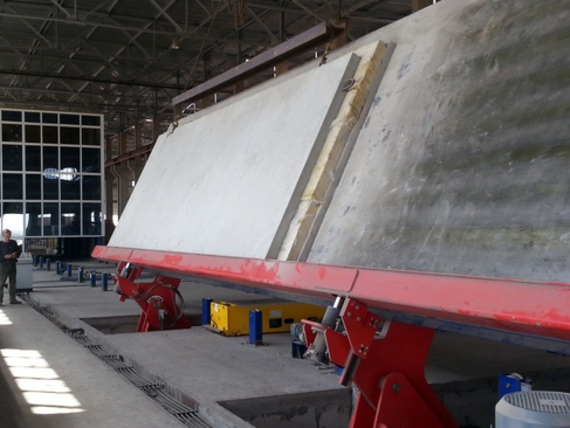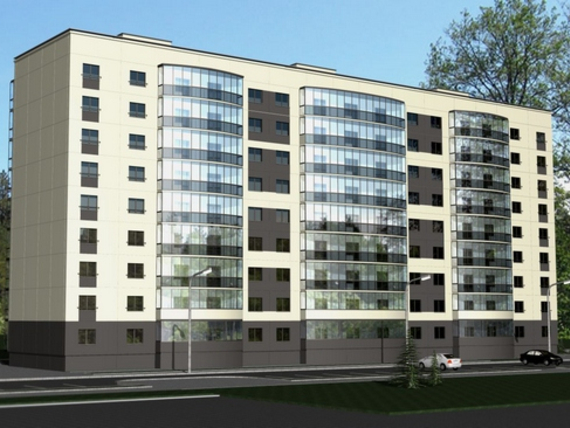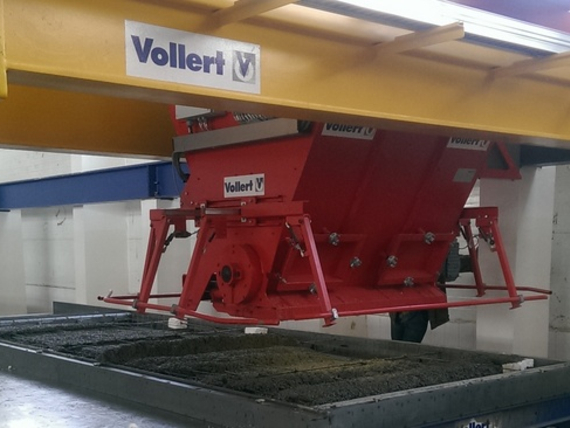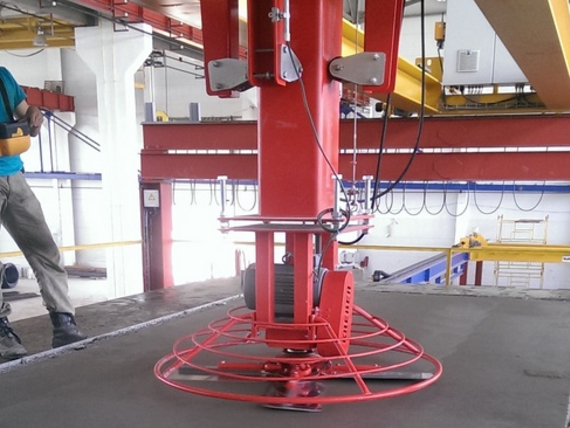The major part of Kazakhstan consists of steppe and desert; the Mugodzhar Hills lie in the northwest of the country and the Kazakh Uplands in the centre, while the mountains of the Tian Shan rise to heights of up to 7,010 m in the southeast. Kazakhstan is also among the countries in the world that are richest in raw materials. Large oil and gas fields lie around the Caspian Sea. There are large iron ore deposits in the Kostanay region and gold is mined in the Altai Mountains. Kazakhstan's economic position has improved immensely in the last 15 years. The populations around the most important industrial centres such as Almaty, Karagandy, Shymkent, Pavlodar and Aktobe are growing and with them the need for affordable living space. Kazakhstan's government is fostering this through intensive residential construction and support programs. A uniform, modern construction system is being put to use with the prefabricated building method - considerably less expensive and above all quicker to implement than conventional construction technologies.
The national building industry in Kazakhstan has recognised this and is purposefully investing in state-of-the-art technology for the manufacture of flat precast concrete elements such as walls and floors. Due to the very varied climatic boundary conditions, double walls and lattice girder slabs are especially in great demand in addition to structural concrete and sandwich elements. These are interesting for the builders in particular due to the structural building advantages. "However, the precast construction method requires a great deal of know-how and state-of-the-art plant technology. We wanted to set a new quality standard right from the start in Kazak hstan and in this way to considerably strengthen our market position. Vollert's great wealth of knowledge as a technology supplier helped us to take this step", explains Alexander Kiku, general director of KKK Beton, one of the leading building contractors in northern Kazakhstan. "We advise our customers on the current precast construction technology in residential and industrial construction and develop turnkey plant solutions. From simple start-up concepts to highly automated multi-function plants. Within 24 months we have realised unparalleled reference projects in Kazakhstan that operate with stateof-the-art production technology", says Igor Chukov, CIS sales director at Vollert.
From the 3D building model to the production-stage precast concrete element
For KKK Beton from Karagandy in central Kazakhstan it was a milestone in its own history - the step into precast concrete element production. Previously a supplier of monolithic construction systems, the strong growth of residential and industrial construction in Kazakhstan prompted the decision in 2012 to move into the cost-efficient new technology. In future, solid and sandwich walls as well as solid slabs will be produced alongside hollow decks on an area of 6,000 m² for turnkey buildings such as houses, commercial properties, industrial estates, shopping centres, hotels or schools. Attention was paid during the design of the layout to flexible capacity extensions and a later expansion for double wall and floor slab production.
From the series production of standardised wall and floor elements to complex façade elements and special parts, all processes are completely matched to one another, from the 3D building planning and the manufacture of the precast elements to the delivery to the building site. Scalable 3D data for precast concrete elements are created from building models (Building Information Modelling/BIM). The BIM solution Allplan Precast from Nemetschek offers extensive functions here for highly efficient and highly automated precast element planning. A master computer from Vollert equipped with a software specially developed for the precast industry takes the data models directly from the CAD system and controls the manufacturing sequence and the machine technology fully automatically. Amongst other things the order administration is also controlled from here. In the conception of the master computer, Vollert ensured that the plant operator can always keep an eye on the most important key economic figures. Hence, the status of each plant component can be directly analysed in order, for example, to take appropriate countermeasures immediately in the case of an error message. The laser projection was also integrated into the master computer. In addition, all plant components are monitored via a central visualisation computer. This enables the visualised display of the entire plant configuration as well as the production data.
Highly automated plant technology for Kazakhstan's building industry
At the centre: the circulation technology. A highly automated plant concept ensures rational working processes and also controls and monitors the sophisticated automation equipment. Modern machine technology ensures highly productive processes - from the fully automatic pallet and shuttering cleaning and the concreting to the storage of the precast concrete elements in the hardening chamber and their removal again by a state-of-the-art storage and retrieval machine. "Through the high degree of automation we have achieved a new standard in the Kazakh market", says Anton Kiku, production manager at KKK Beton. Precast elements with a shuttering area of up to 40 m² and loads per unit area of up to 375 kg/m² are shuttered by means of a magnetically fixable shuttering system.
Before that a CADCAM-controlled large plotter with an application accuracy of ±1 mm draws the outlines of the precast concrete elements to be produced 1:1 on the formwork surface. A water-soluble, easy-to-remove ink is used for this. Dimensional errors are avoided and the processes are significantly rationalised by the automatic operation and plotting speeds of up to 5 m/s. Concreting is carried out by a modern semi-automated concrete distributor, which in addition to longitudinal travel also drives transversely with the aid of a bridge bogie. This not only enables a discharge area of up to 3.20 m to be achieved; it is also possible to drive to several concreting lines arranged in parallel for solid and sandwich elements, and in the expansion stage for double walls and floor slabs. The concrete is discharged by means of a spiked roller/slide valve construction, manually controlled by means of a moving control panel attached to the side of the bridge. The discharge volume and the speed of the spiked roller (frequency controlled) can be exactly adjusted to different concrete consistencies. Hydraulically actuated flat slide valves block out the area in which no concrete is to be discharged, e.g. for windows. By means of the slide valve width adjustment, the width of the outlet can be adapted trouble-free to different kinds of concrete (normal concrete, lightweight concrete, etc.). A roughening device provides for the time-saving roughening of the surface.
The concrete is compacted by a high-frequency vibrating station with synchronised external vibrators and very good surface and edge quality are thus achieved. The frame of the vibrating station lifts the shuttering pallet pneumatically out of the circulation for this. As a result, the effect of the 8 external vibrators is also directed toward the centre of the pallet and provides for the necessary, high frequency compaction of the concrete. The vibrating station was fitted with an additional vibration decoupler in order to reduce noise emissions. A floor-guided storage and retrieval machine (SRM), which is designed for a concrete element area load of 500 kg/m2, subsequently puts the precast concrete elements into storage and removes them again fully automatically. The heated hardening chamber consists of three rack towers, each with ten pallet compartments arranged one above the other and clad with thermally insulating glass. The SRM has adjusters for accurate horizontal positioning in the individual hardening chamber axes. Driving to the individual hardening chamber levels takes place by means of setting bars, whose set-down points are infinitely adjustable.
Vollert has developed special processes for the production of sandwich walls and uses intelligent transverse transport technology for this. After the upper shell has been concreted, it is first compacted and then passes through several workstations in a closed circulation concept. For the considerably thicker supporting shell, the insulation is first attached and the positions of the reinforcement is then shown by an installed laser projection unit. Following a further concreting process, the concrete element is compacted in the next stage of expansion on a particularly powerful vibrating/shaking station. Curing takes place in the hardening chamber. Following a predefined curing time, the solid concrete elements and sandwich walls are transported through the hardening chamber to the workstation behind it for smoothing. It is intended to install an automatically operating power trowel here at a later date in order to achieve even higher surface qualities.
"With the modern plant equipment we are fully flexible and optimally set up in the market. In designing the plant concept we considered from the outset the expansion of our product range to include double walls and precast slabs", Alexander Kiku says. In a further stage of expansion a pallet turning unit is foreseen in the circulation concept for this. The foundations and a vibrating station have already been preinstalled for this.
Solid and sandwich elements in fair-faced concrete quality
The building company TOO Bolashak is also following the trend towards the precast construction method and virtual building modelling by means of BIM. For the stateof-the-art construction system, developed by the technology supplier Elticon for multistorey residential and industrial buildings, the company has invested in a new precast plant for solid concrete and concrete sandwich elements at its main site in Aralsk in western Kazakhstan. Vollert was chosen to supply the know-how and technology. "Due to its geographical location TOO Bolashak is capturing a dominating position in the premium-class building segment, not only in the Aralsk region, but also in the neighbouring Russian region around Samara", explains general director Kaydar Koshanov.
Here too, attention was paid to modern circulation technology, a high degree of automation and very high precast element quality. "This begins right from the work preparation. As at KKK Beton we paid particular attention to the pallet preparation and to clean, technically perfect shuttering profiles. These are indispensable for the manufacture of high-quality precast concrete elements", explains Igor Chukov. First of all, following the demoulding procedure, a fully automatic, stationary pallet cleaner mechanically cleanses the surface of adhering concrete residues by means of a rotary roller brush and a steel scraper unit. An electrically driven round brush is pressed against the formwork profile to clean the fixed edge formwork. A release agent spraying unit then moistens the surface evenly. A fully automatic top end profile cleaner cleanses profiles and magnets of concrete residues and ensures even application of the release agent to the stopend profiles.
"In Aralsk, too, we use a state-of-the-art CADCAM-controlled large plotter for drawing the outlines of the concrete element", says Chukov. The large plotter receives the necessary CAD drawing data for the precast concrete element to be produced from the master computer. Following the manual attachment of the shuttering profiles and the reinforcement grids, concreting takes place with the aid of a bridge concrete distributor. With longitudinal and transverse movements, hydraulically actuated flat slide valves and an electrically driven spiked roller apply the concrete precisely and evenly at a total of four concreting stations. For the manufacture of high-quality sandwich walls, the plant concept has both a high-frequency vibrating station for the compaction of the upper shell in fair-faced concrete quality and a low-frequency shaking station for the compaction of the more heavily reinforced support shell. The patented shaking station from Vollert is based on the synchronisation of several servo-drives with adjustable unbalanced masses, so that the forces are summed together and the optimum compaction energy is achieved for the respective concrete weight. The suspension of the shaking frame is also special. Instead of relatively rigid and high-wearing rubber buffers and rubber-bonded metals, the shaking station is suspended on pendulums. By lowering the water-cement mixing ratio (w/c ratio) whilst maintaining the same early concrete strength, the cement content can be reduced by about 10 %, thus considerably lowering the manufacturing costs for the precast concrete elements. Besides that the low-frequency compaction station is extremely quiet in operation with a max. of 70 dB.
The curing area consists of two lined hardening chambers, each with three rack towers and eight compartments arranged one above the other. The hardening chambers are equipped with a CureTec heating system and feature passage/exit levels, which are separated from the remainder of the pallet compartments. Thus none of the heat required for the curing process can escape. Following the compaction of the concrete the precast element is transported directly under the hardening chamber through to the floor-guided storage and retrieval machine which, centrally located between the two hardening chambers, performs the fully automatic storage of the shuttering pallets.
Smoothing station at second working level for formwork-smooth surfaces
"One of the highlights is certainly the particularly space-saving smoothing platform", says Nurzhan Sakharov, production manager at TOO Bolashak. To achieve this, the smoothing station was installed on a second working level above the circulation system. Following a defined curing time the concrete elements are transported directly by means of friction wheels and a gear rack pusher out of the upper part of the hardening chamber into the smoothing area. A power trowel with a bridge design creates formwork-smooth surfaces. This is ensured by an electrically driven smoothing head with blade adjustment and adjustable speeds of rotation.
"The high degree of automation ends with the loading process", says Igor Chukov. At both KKK Beton and TOO Bolashak, a large number of technical details ensure efficient processes where the lifting and loading technology is concerned. The solid and sandwich elements are lifted off vertically by a high-performance tilting station. This takes place up to a maximum tilt angle of 80 °. The tilting station additionally has a hydraulically movable support beam designed to take the weight of the precast concrete elements. In the case of pallets with no fixed edge shuttering, the support beam moves beyond the edge of the pallet, thus preventing the concrete element from slipping during the tilting procedure. A runoff truck subsequently transports the concrete elements on loading racks to the outdoor area ready for delivery.
Kazakhstan: 'Ready for more'
"Kazakhstan is ready for more", declares Kaydar Koshanov of TOO Bolashak. "For more growth, for more building activity. The precast construction method will lastingly change the face of Kazakhstan. The new building technology will become generally accepted, and we will create more inexpensive living space for people and the necessary building infrastructure for industry and the public institutions."
The flagship projects in Aralsk and Karagandy operate with modern machine and plant technology from Vollert. The two building companies are thus optimally prepared for the future and are setting new standards for the building industry in Kazakhstan.

